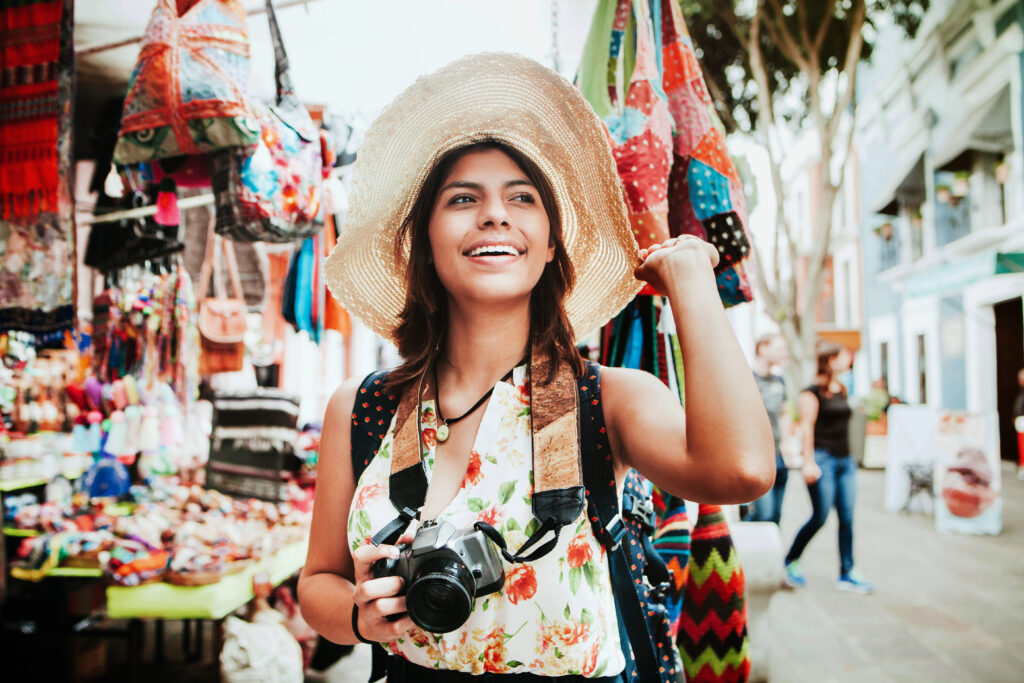
Bringing back souvenirs from your travels helps to prolong the wonder of your vacation. Behind this harmless gesture, however, sometimes lies an unexpected ecological impact, both locally and globally.
Why does bringing back travel souvenirs sometimes have a negative ecological impact?
According to a Holiday Inn study, four out of five people like to bring back souvenirs from their travels. For most, this small gesture has become a real vacation habit. And therein lies the problem: it's often a reflex of over-consumption. Very often, the souvenir becomes an automatic, and we buy without any real need.
But these memories are not trivial. They involve production, packaging and transport. All these aspects have a heavy ecological cost: production of plastic, pollution, emission of greenhouse gases such asCO2. Quite often, those souvenirs we so enjoyed on our travels end up lying around the house. That's a long way from sensible consumption!
Rules for bringing home souvenirs
But that doesn't mean we should banish souvenirs from our travels. To travel in an eco-responsible way, you first need to make sure that you are consuming sensibly, i.e. that you have a real need for the object in question, and that you will use it. Secondly, you can reduce the ecological impact of your travel souvenirs by following a few rules.
Don't take anything from nature
A plant taken from nature to garnish your garden, a jar of sand, a handful of shells... These are all souvenirs to bring back from a trip that seem full of poetry. But taking something from nature is tantamount to upsetting the fragile balance of ecosystems:
- Taking a flower means preventing a plant from reproducing. If this sounds trivial, you have to multiply it by the thousands of people doing the same thing, in the same ecosystems, and also understand that some plants are particularly rare and protected.
- Uprooting a plant to grow it at home, in addition to modifying the local ecosystem, can pose a problem when you return from vacation! Many plants are classified as EEE, or invasive alien species, i.e. foreign plants that multiply so quickly once displaced in a favorable environment, that they threaten native plants.
- Removing shellfish not only deprives certain species of potential shelter, but also slows down the slow process of sand formation, essential to the survival of these ecosystems!
- Collecting sand or pebbles is forbidden and punishable by fine in France and many other ecological destinations, as it not only disturbs flora and fauna, but also causes coastal erosion. Instead, why not pick up wave-polished glass on the beach and help keep it clean, while bringing home a colorful souvenir?
Avoid over-consumption
Before bringing home a souvenir, it's essential to ask yourself a few questions:
- Do I really need this item?
- Will I be wearing it?
- How many times have I used the last souvenir I brought back from my trip?
We often realize that we don't really use these souvenirs. Yet all of them have had an impact on production and transport. That's why it's essential to keep travel souvenirs to a minimum.
Check the origin of souvenirs
A travel souvenir loses its meaning if it doesn't come from the destination visited at all. Yet most of the trinkets you'll find in tourist stores have been made in China, or in developing countries. As well as contributing to dangerous working conditions, these souvenirs have a disastrous ecological impact, particularly in terms of greenhouse gas emissions. So it's essential to ask where the items you buy on your trip come from.
Avoid over-packaging
To avoid consuming too much plastic, pay close attention to the packaging of your souvenirs. Instead of plastic boxes, use kraft paper or, better still, no packaging at all. Instead of bubble wrap to protect your fragile souvenirs, wrap them in your clothes, and save space in your suitcase at the same time.
Buy from local artisans and small producers
When it comes to bringing home souvenirs, avoid stopping at souvenir stores. Most of them are filled with made-in-China items and plastic. Instead, stop by a local artisan. Then you'll have a real souvenir, one that actually comes from the place where you travelled.
This not only reduces greenhouse gas emissions linked to transport, but also supports the local economy. You'll be able to buy little trinkets made of wood or natural materials like raffia, or more traditional objects such as pearl necklaces, embroidery, sculptures, and even clothes that will be the envy of everyone, as they'll be impossible to find elsewhere! Don't forget to bring food from small local producers. This way, you can support local businesses and extend your trip to the plate. What's more, it allows you to discover your destination in even greater depth, in line with the principles of slow tourism!


